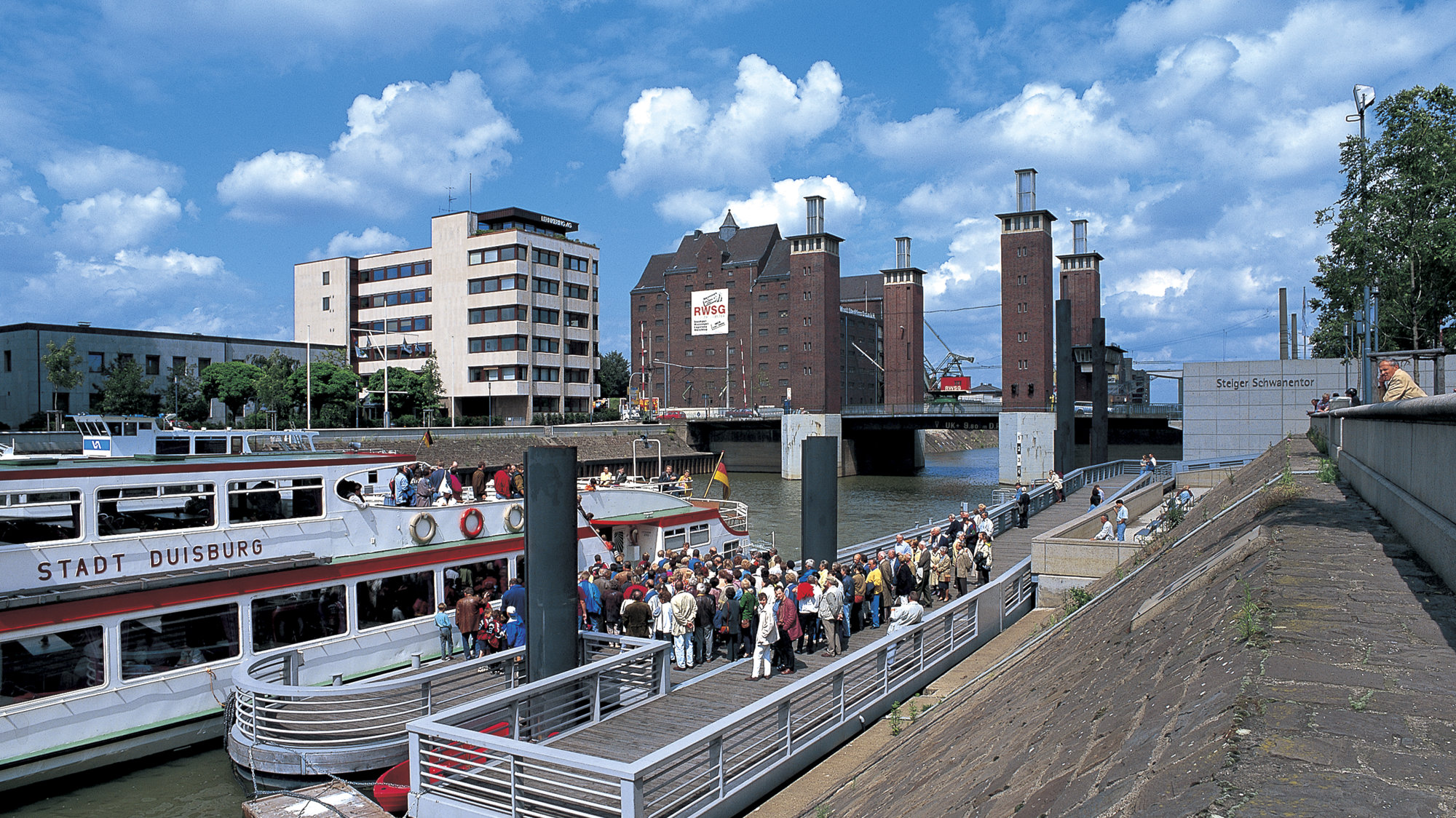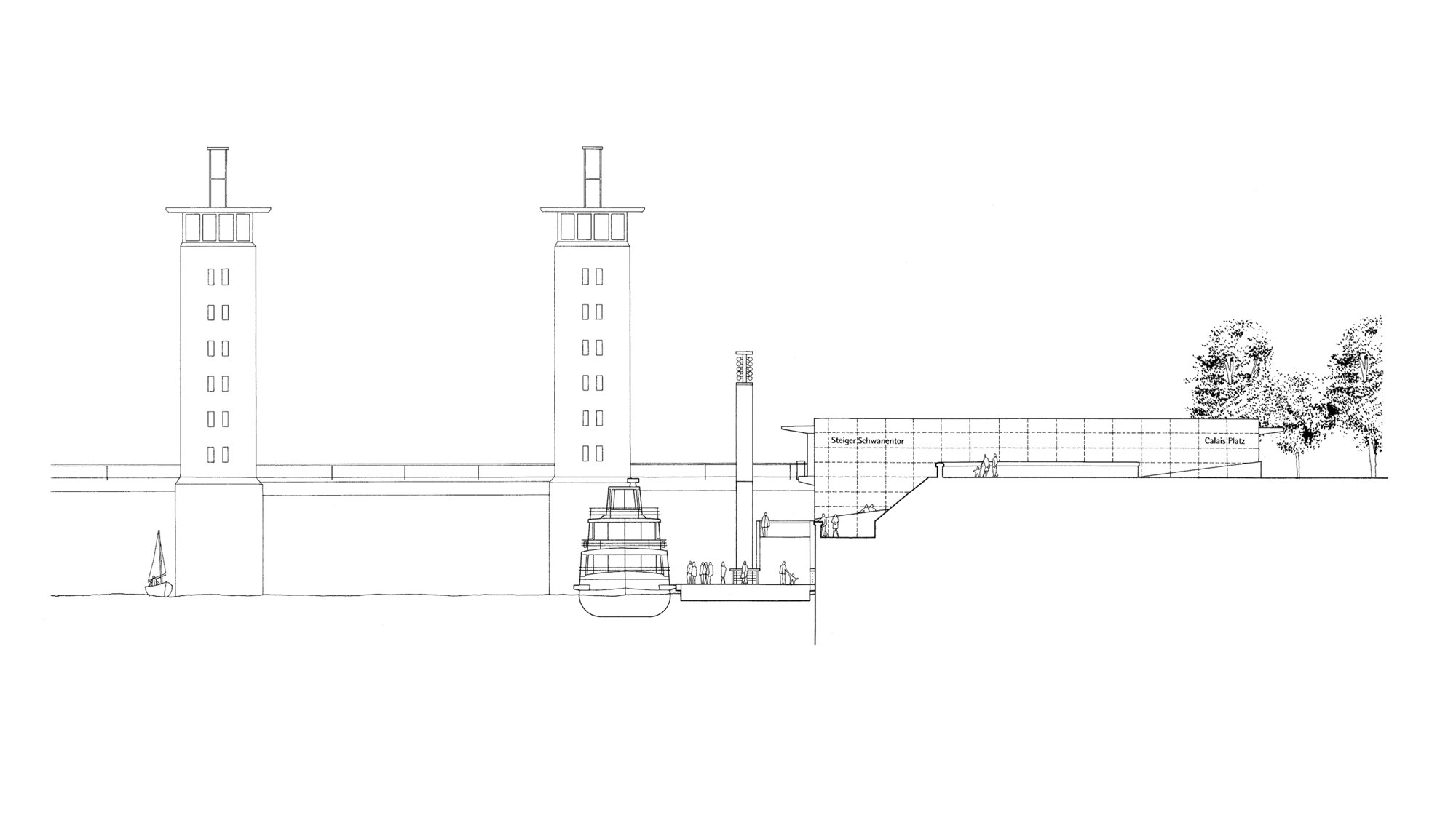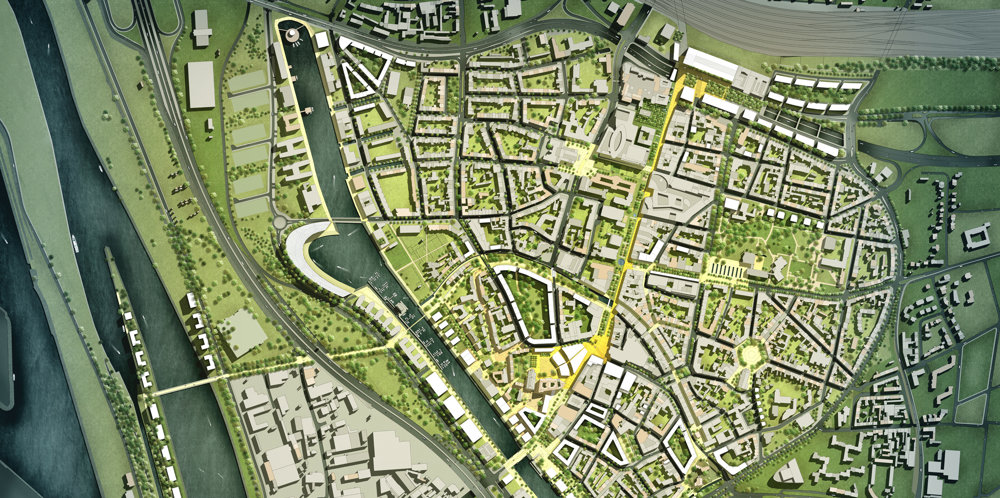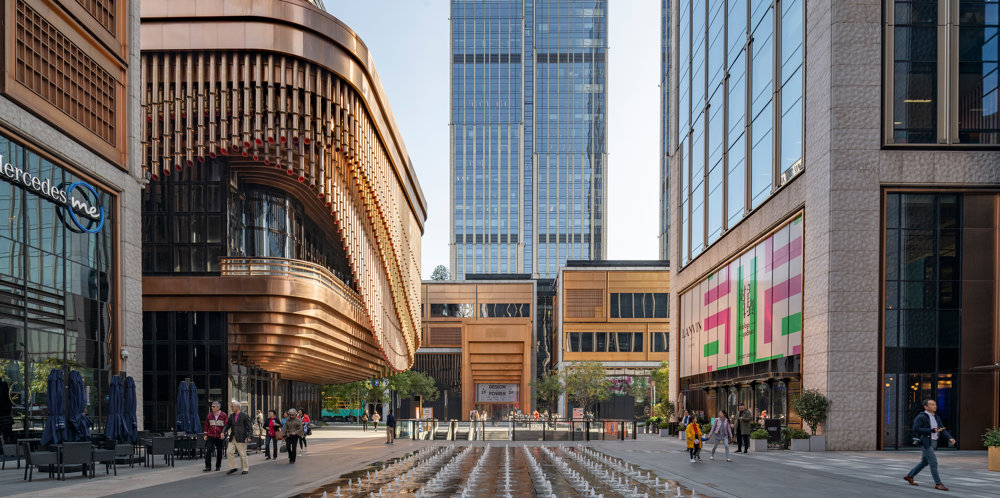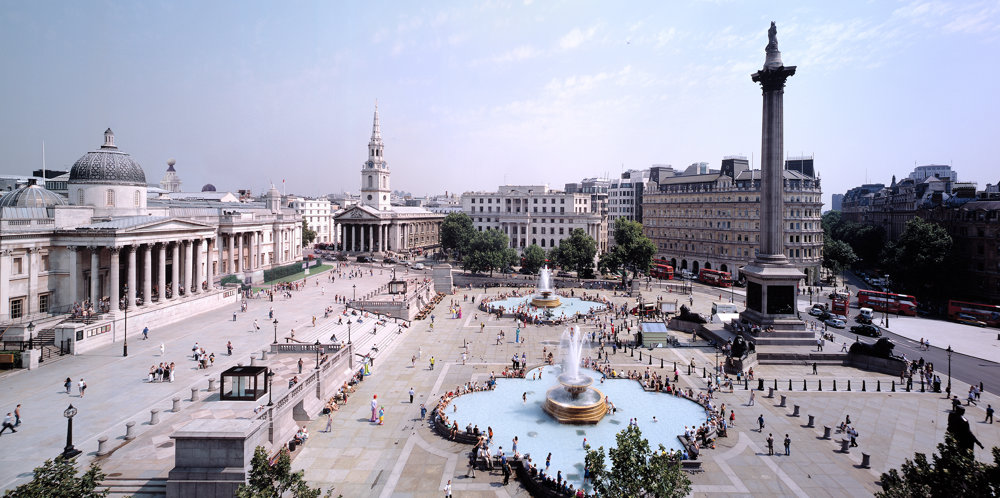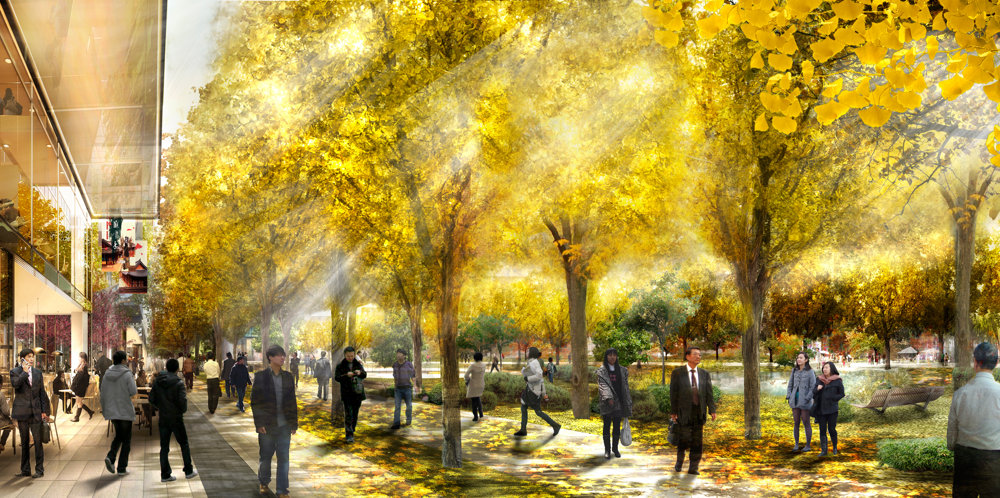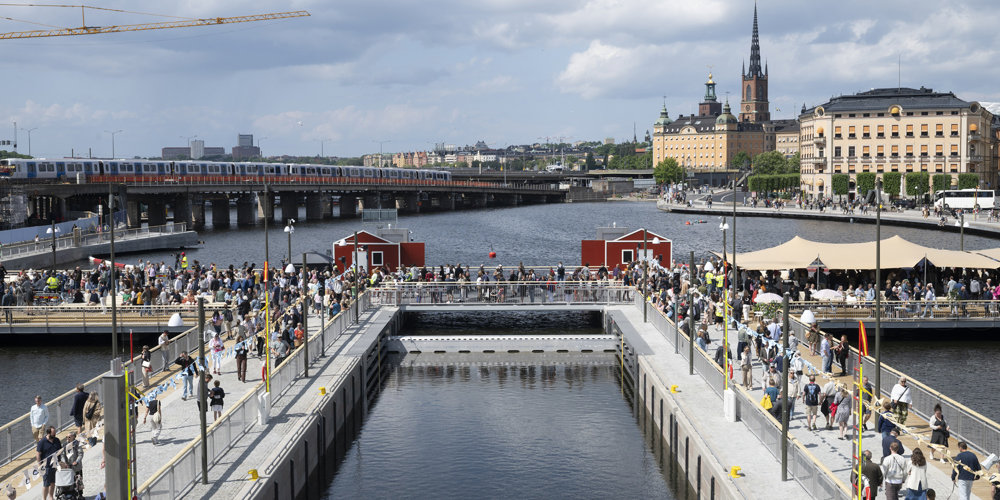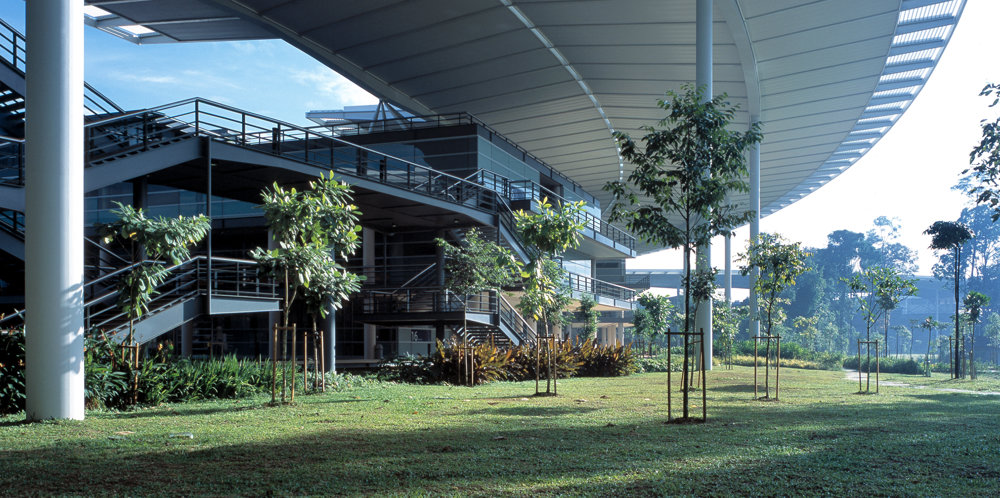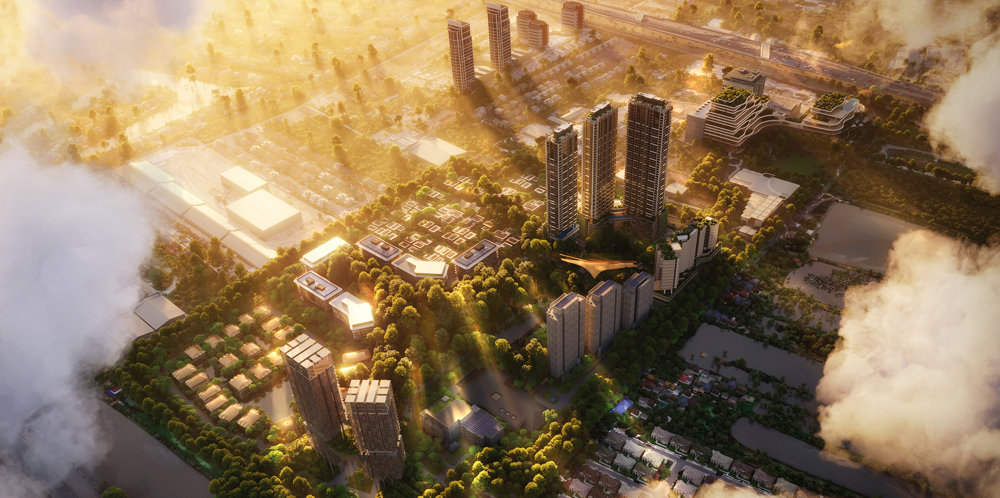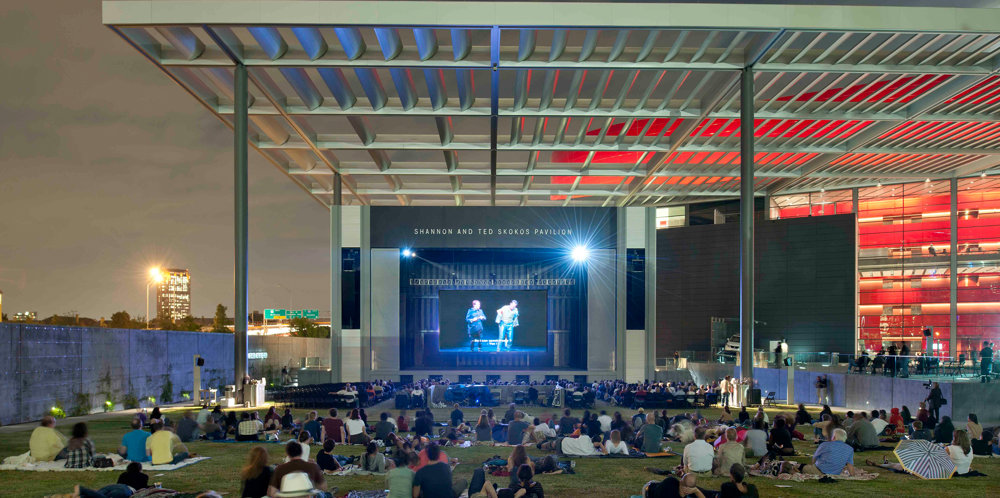Duisburg, in the heart of the Ruhr valley, has had to reinvent itself following the decline of its traditional heavy industries. In 1991 an international competition was held to establish a masterplan for the renewal of the Inner Harbour – the largest inland waterway in the world. It provided an opportunity to test, at a larger scale, ideas about mixed use and sustainability then being developed for the nearby Microelectronics Park.
The Inner Harbour occupies an 89-hectare site close to the city centre and benefits from excellent transportation links to key cities and towns throughout the Ruhr. The masterplan aimed to draw the life of the city to the waterfront, combining the selective refurbishment of the buildings lining the harbour with new construction to provide housing, offices and light-industrial uses, together with a wide range of social and cultural amenities. A guiding principle was the creation of a flexible framework that has allowed elements to be developed independently over time by different architects. New infrastructure and public amenities were put in place first to establish the harbour as an attractive place in which to live and work or to visit. A tree-lined promenade was created along the waterfront and canals were excavated as armatures for new housing development. Apartments are grouped in five-storey terraces which look out over the water or inland to communal gardens. Future developments include the landmark Eurogate, planned for the waterfront. A zero-emission building, it offers flexible office, hotel and conferencing facilities and extends the public attractions around the harbour.
The practice’s work in Duisburg demonstrates that the trend towards clean, quiet industries has the potential to reinvigorate declining urban areas and create sustainable communities for the future, where home, workplace and recreation are all close by. In place of the zoned and functionally segregated city of the twentieth century, it offers a twenty-first century urban paradigm of mixed-use. With many cafés and restaurants, an art museum, new housing, offices, converted historic buildings and a new park, Duisburg Inner Harbour is becoming a thriving commercial and residential centre in its own right.









